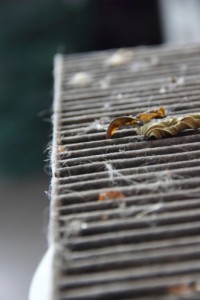Top 5 Indoor Air Contaminants
Indoor air pollutants can pose serious health threats, but H2 Environmental can help eliminate these dangerous contaminants
Many people worry about the degradation of the natural environmental but give little thought to the quality of the indoor environments within their own homes. Indoor air contamination can pose significant health risks. Fortunately, H2 Environmental can help eliminate the following top 5 indoor air contaminants to improve the indoor air quality in your home.
Allergens
Allergens, such as dust, pollen, pet dander, and mold spores are probably the most common type of indoor air contamination. Almost every home will have some amount of these allergens. When the concentration of allergens is high enough to trigger uncomfortable allergic responses, asthma attacks or other dangerous respiratory conditions, something needs to be done. H2 Environmental can help by recommending a comprehensive solution that may include improving ventilation, eliminating the source of mold spores through mold remediation, or adding an air purifier to the home.
Carbon Monoxide
Carbon monoxide is one of the most dangerous indoor air contaminants. This colorless, odorless gas has the potential to kill a person before they even know they have a problem. The symptoms of carbon monoxide poisoning include headaches, dizziness, nausea and fatigue—in other words, flu-like symptoms, making it hard for a layperson to recognize the true source of their illness. Fortunately, carbon monoxide detectors are affordable and effective. H2 Environmental can help you place your detector in an appropriate place to best detect gas that could escape from fireplaces, furnaces, gas appliances, and attached garages.
Radon
After smoking, radon is considered the top cause of lung cancer in America. This invisible and odorless radioactive gas is created by the natural breakdown of uranium in rock, water, and soil and affects an estimated 1 in 15 households in this country. Fortunately, radon reduction systems can lower radon levels significantly, sometimes by up to 99 percent. H2 Environmental can help you test for radon and develop a plan for reducing radon to safe levels.
Asbestos
Asbestos is another common indoor air contaminant in homes built before the 1970s. These homes may have asbestos-containing ceiling tiles, flooring, roofing materials, insulation, or popcorn ceilings among other things. When these materials break down, asbestos fibers can be inhaled, causing serious illnesses including lung cancer. In order to eliminate asbestos contamination, typically the asbestos-containing material must be removed and the site cleaned thoroughly to capture all dust and fibers. H2 Environmental is highly experienced in creating and administering plans for all kinds of asbestos remediation projects.
Lead
One final indoor air contaminant to worry about is lead. Lead paint was common in many homes built before the 1960s, and today dust from this old, flaking paint poses a danger to anyone who inhales or ingests it. Lead contamination can also come from lead-rich outdoor soil that gets tracked into the home. Lead exposure can result in serious nervous system disorders as well as developmental problems in children. Fortunately, H2 Environmental can help you reduce your risk of lead exposure by testing your indoor air and developing a plan to deal with any elevated lead levels that may be discovered.











